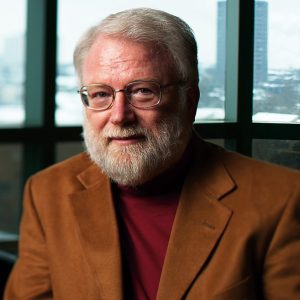The Opportunities and Challenges of Exascale Computing
Thom H. Dunning, Jr.
Director Emeritus
Northwest Institute for Advanced Computing, USA
Abstract:
Click here for Thom H. Dunning, Jr.’s presentation slides.
A new generation of supercomputers is providing scientists and engineers with the ability to simulate a broad range of natural and engineered systems with unprecedented fidelity. Just as important, in this increasingly data-rich world, these new computers are also allowing researchers to manage, integrate and analyze unprecedented quantities of data, seeking connections, patterns and knowledge. The impact of this new computing capability is profound, affecting science, engineering and society. In 2013, the National Center for Supercomputing Applications at the University of Illinois at Urbana-Champaign, with funding from the National Science Foundation, deployed a computing system that sustains one quadrillion arithmetic operations per second on a broad range of science and engineering applications as well as manage and analyze petabytes of data. But, computing technologies continue to move forward with the U.S. Department of Energy planning to deploy computer systems more than ten times faster than Blue Waters next year and more than a hundred times faster in the early 2020s. However, this increase in performance is only possible because of significant changes in the underlying computing technologies. Thus, these computers present both an opportunity for new advances in science and engineering and a challenge for computational scientists and engineers who must revise, and even redesign, their applications for these new technologies. The presentation will describe Blue Waters as well as the new leading-edge computing systems being deployed by the U.S. DOE, illustrating the role that they play or will play in scientific and engineering research and describing the challenges facing the development of modeling and simulation applications for this class of supercomputers.
Bio-Data:
Thom H. Dunning, Jr., Ph.D, is a Battelle Fellow at the Northwest Institute for Advanced Computing, a joint venture of the Pacific Northwest National Laboratory and the University of Washington. He is also a Distinguished Faculty Fellow in the Department of Chemistry at the University of Washington and a Professor Emeritus in the Department of Chemistry at the University of Illinois at Urbana-Champaign.
Dr. Dunning is the former director of UIUC’s National Center for Supercomputing Applications. As NCSA director, Dr. Dunning was responsible for the development and deployment of the cyberinfrastructure needed by the nation’s academic research and education community, including one of the world’s most powerful supercomputers—Blue Waters. Dr. Dunning was also the Distinguished Professor of Research Excellence in UIUC’s Department of Chemistry. Prior to joining UIUC, Dr. Dunning was the founding director of the Joint Institute for Computational Sciences at the University of Tennessee and Oak Ridge National Laboratory and a professor in the chemistry and chemical engineering departments at the University of Tennessee. Before that, he was the vice president for supercomputing and networking for the University of North Carolina System and a professor in the Department of Chemistry at the University of North Carolina, Chapel Hill. Earlier, he served as Assistant Director for Scientific Simulation in the Office of Science at the U.S. Department of Energy, where he created the Scientific Discovery through Advanced Computing (SciDAC) program. Previous positions included the director of PNNL’s Environmental Molecular Sciences Laboratory, head of the Theoretical and Computational Chemistry Group at Argonne National Laboratory, and staff member at Los Alamos National Laboratory.
Dr. Dunning obtained his bachelor’s degree in Chemistry in 1965 from the University of Missouri-Rolla and his doctorate in Chemistry/Chemical Physics from the California Institute of Technology in 1970.



